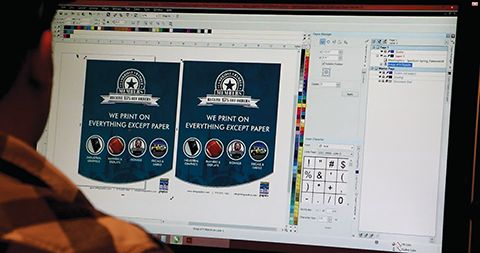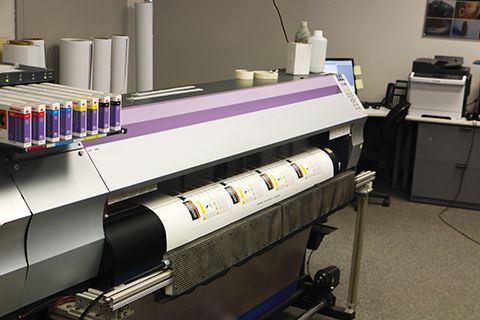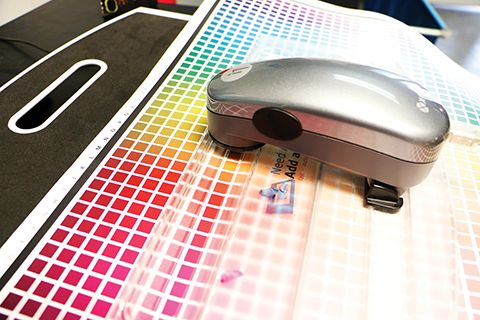
With a combination of industrial and marketing graphics, the company has made a specialty of printing on everything except paper.
Strength in adaptability
Years of experience printing on materials with tight tolerances, particularly dimensional parts, have helped make MitoGraphics highly adaptable to changes in the market.
“We’re a diverse team of craftspeople, working with a diverse range of equipment,” says Rier. “Our workflow is constantly changing and we devote a lot of resources to staying ahead of the curve. Fortunately, most of our core clients are very long-term. In many cases, we’ve done work for them for more than 15 years. And referrals have always been a huge part of our business.”
One key to this adaptability has been understanding the various benefits and limitations of analogue and digital printing—and knowing when to combine both processes for the same project, such as when producing a colour logo on a sign before adding lettering.
“Digital printing offers a broad colour range, high speed, high resolution and variable data, but a lot of our jobs are not suitable for digital because of their requirements for opacity and durability,” Rier explains. “Screenprinting is superior for specialty inks, like metallics, opaque layers and adhesives, and offers a lot of advantages in terms of outdoor durability. Most of what we consider our ‘marketing’ materials are digitally printed, but most of our industrial graphics benefit from the versatility of screenprinting.”
By way of example, MitoGraphics frequently screenprints elevator control panels. Using client-supplied fascia panel substrates, the company is able to provide a quick turnaround.
“Most of our customers buy short runs of graphics, but fairly frequently,” says Rier. “They treat us like an extension of their own operations, as we can insert ourselves into their production process. We can do their research and development (R&D), prototyping, testing and production.”
These customers are mainly spread out across Canada, but there are also key accounts in the U.S. and MitoGraphics has even exported large projects to China.
In another example of niche output, the company colour-matches and prints variable data on 129-mm2 (0.2 sq in.) identification (ID) tabs for the agricultural industry, which must be able to withstand being stored for long periods at temperatures as low as -200 C (-328 F). These tend to involve large volumes and short lead times. The company uses tin-coated steel so the tags can be magnetized for adhesion to vials.
“They’re used for categorization, so they have to be very colour-stable,” says Rier.
Combining processes
As for digital printing, MitoGraphics has relied on six Mimaki inkjet presses, cutters and plotters over the years, including solvent-based and dye-sublimation models.
“We were doing high-volume dye-sub printing before anyone seemed to know what it was,” says Rier. “We also have a laser cutter with a digital vision system that we can integrate into our workflow. We may not identify ourselves as a traditional sign shop, but we do a lot of work for other sign shops and marketing companies.”
The in-house finishing department offers sewing (for banner edges), lamination, die cutting, hot foil stamping, laser engraving, waterjet cutting and full fabrication of metals and plastics.
“Many of our products are cut to shape or three-dimensional (3-D) and made from multiple materials,” Rier explains.
The company has done everything from wrapping a vending machine with imaged graphics to screenprinting ceramic inks directly onto large glass panels. With this range of techniques at hand, Rier also credits the company’s success to its long-time membership in SGIA.
“We’ve been very involved with them over the years,” he says. “We often rely on the SGIA network for technical support. In a way, we’ve evolved along with them.”







